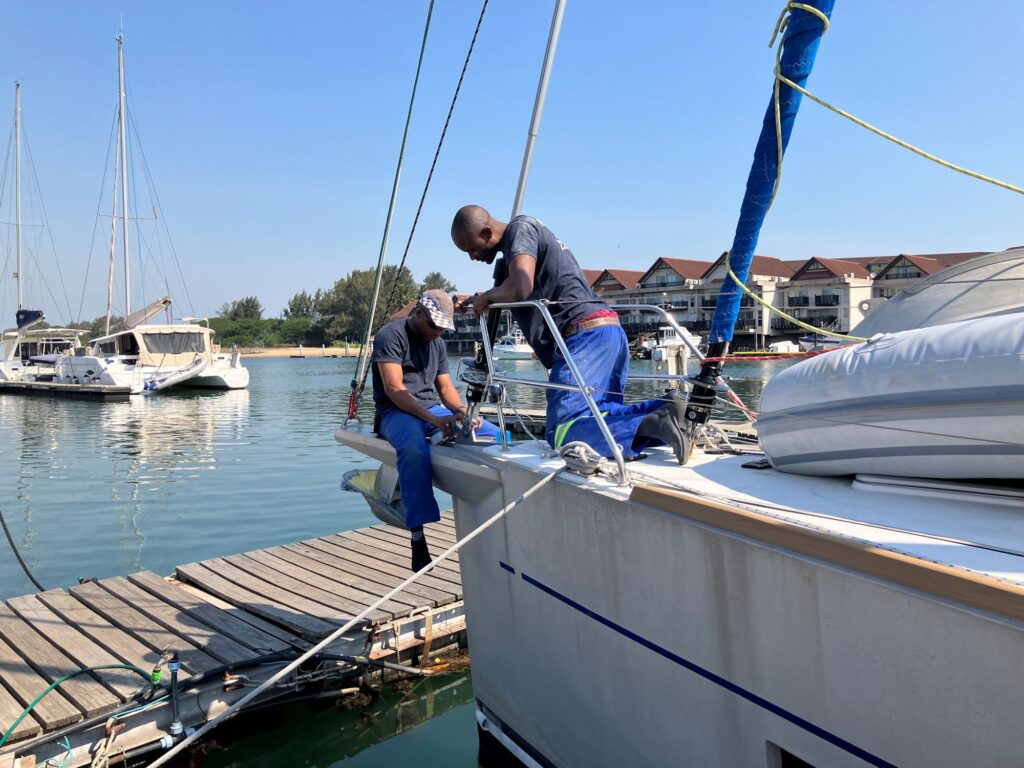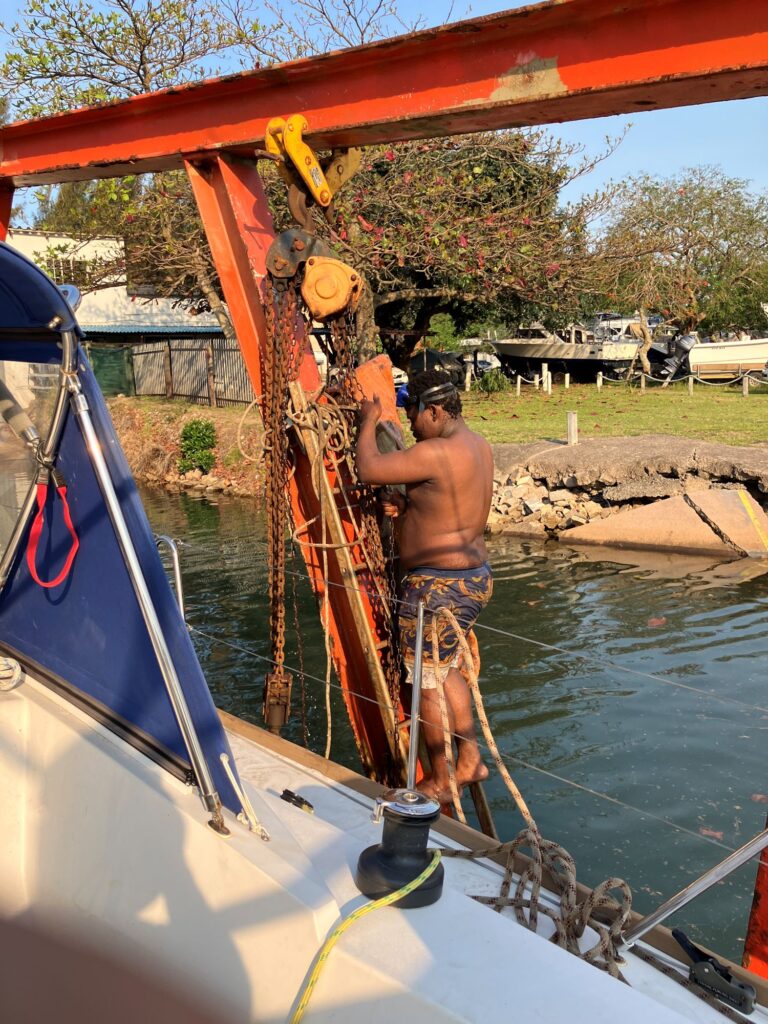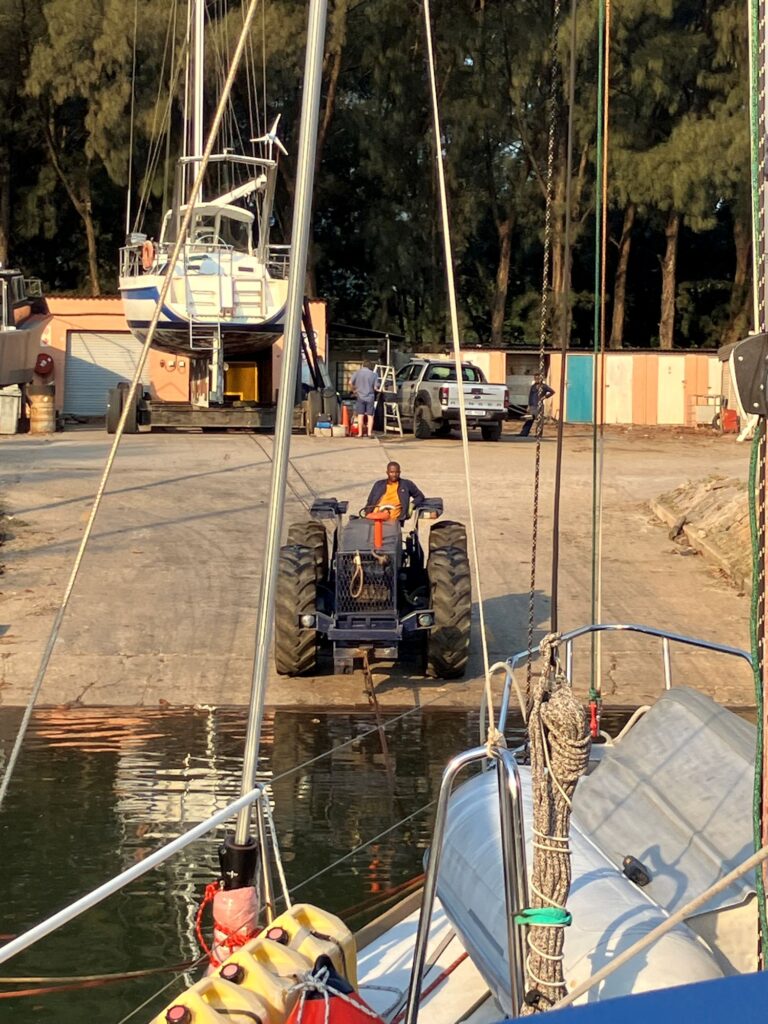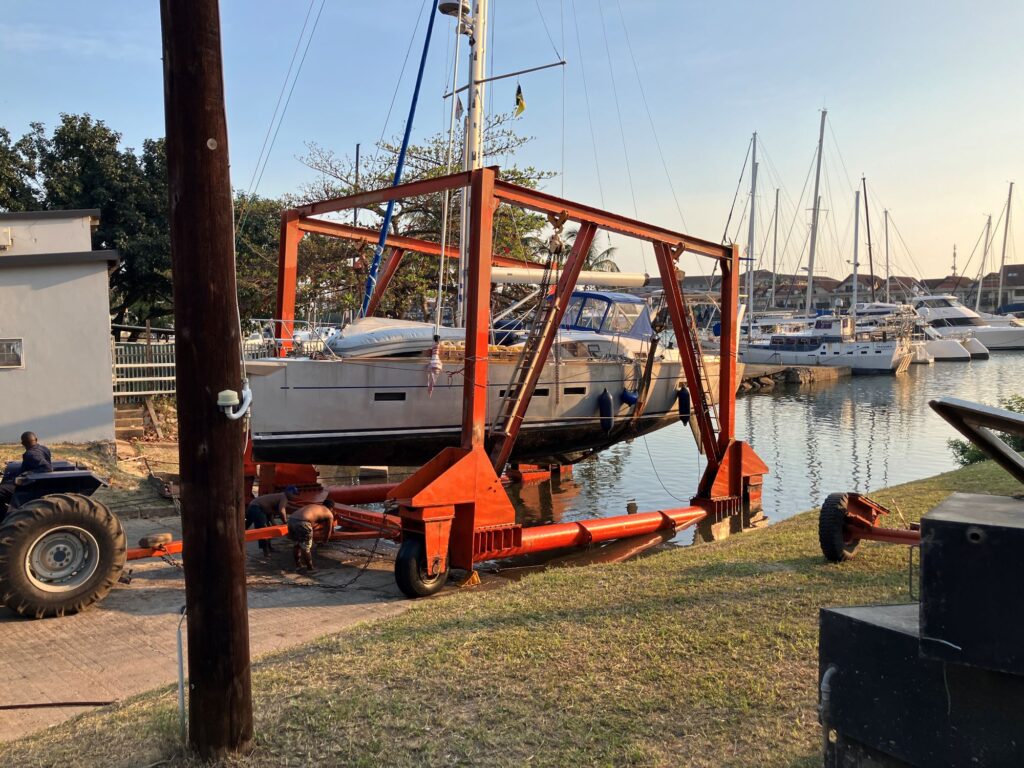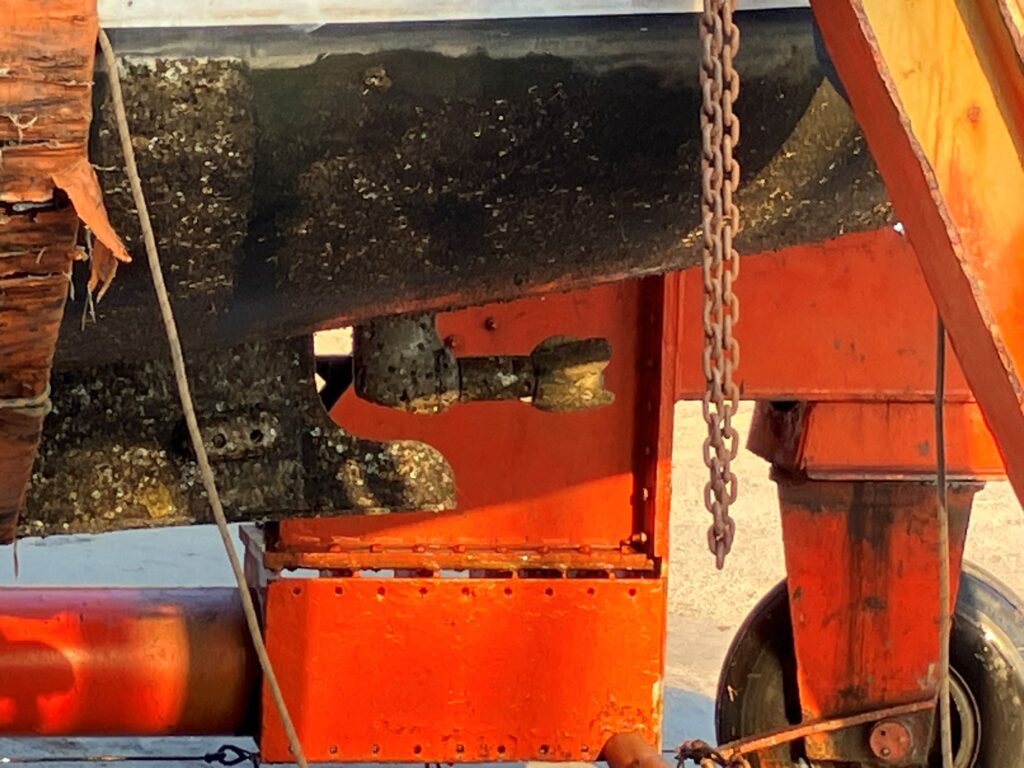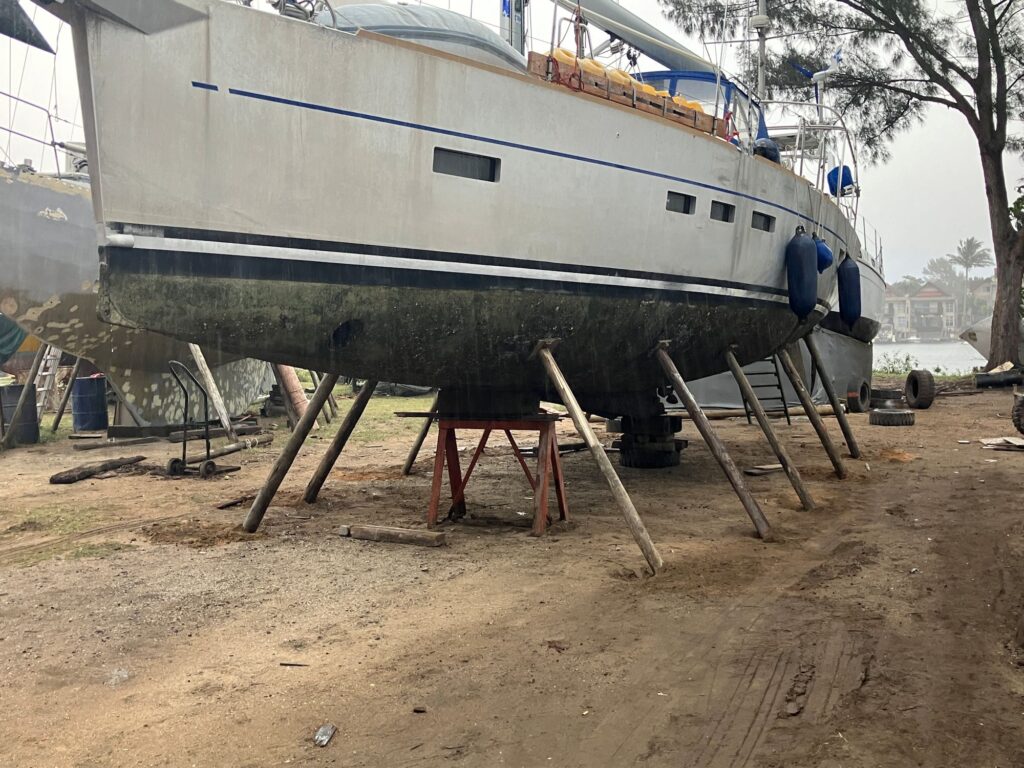Just before leaving Darwin, with the boat still in the marina, I had a diver attempt to clean growth off the hull so I’d have a more efficient sail across the Indian Ocean. He was only partly successful. He said fresh water rains and hot temperatures in Darwin during the months it was there had stimulated a lot growth on hulls, especially small barnacles which he wasn’t able to remove.
Wanting to get the Indian Ocean crossing done when the winds were favorable, I didn’t have time, or a place, to get the boat hauled out of the water and the hull properly cleaned before arriving in Richards Bay. The facilities for doing this at Reunion Island were fully booked for months so I made arrangements ahead of time to get this done here.
September 5 was the day. I came to realize the facilities they have here, although very commonly utilized by cruisers sailing this route, are pretty primitive compared to others I’ve seen and used. First, the travel lift itself is pretty small with a low crossbar. The slope of the bottom of the takeout ramp is such that you have to go into the lift bow first. As a result of these two factors, the forestays on boats have to be loosened, disconnected at the deck end, and pulled to the side. Their tension holding the mast is replaced with running rigging; in my case, the spinnaker and genoa halyards. Getting enough slack on the forestay to disconnect it at the deck end required loosening the backstays and the shrouds. The backstays have been dropped entirely before when loading the boat on the transport ship which brought it to the US. I also dropped them to get the boat on the travel lift in Puerto Montt. I’ve never loosened the shrouds or taken off the forestay before. These are all fundamental things that hold the mast upright. For any sailor, loosening these supporting steel cables is an uncomfortable thing to do. In this case there was no choice if I wanted to get the boat hauled out of the water in Richards Bay.
After the boat is out of the water and positioned where it will sit while work on the hull is completed, it needs to be supported upright above the ground. Every other boatyard I know used heavy telescoping metal support posts designed for this purpose. At Richards Bay they cut lengths of wooden posts to support the boat. One end of the post is dug into the ground while the other end has a flat piece of wood propped against the hull. I’m fortunate with Phywave because it’s capable of sitting upright on it’s own when the centerboard is retracted. If fact, it’s possible to beach it. Fixed keel boats can’t do this and need to sit higher in the air. Of course, if Phywave sat flat on the ground there would be no room to clean the hull and renew the anti-fouling paint. That work will begin on Monday and hopefully be completed so I can get the boat back in the water on Friday.
Overall, the process to finally get the lift cleared to handle another boat takes several hours. Considering that there are 2 meter tides in Richards Bay, and they need high tide to haul or launch boats, realistically they can only handle one boat a day.
